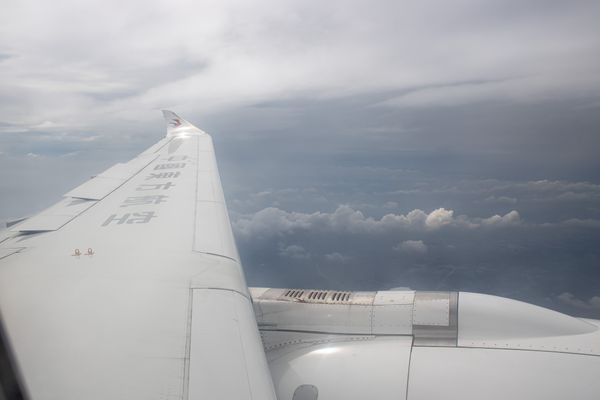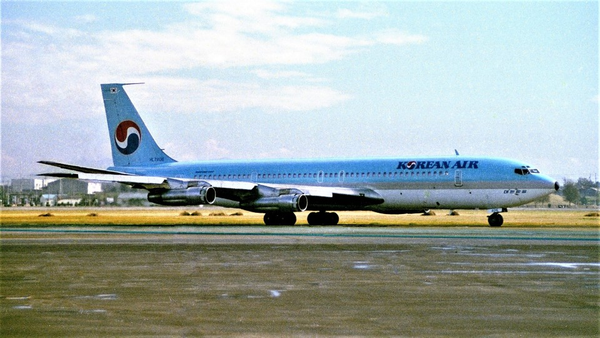Flying is considered the safest transportation due to the extremely low probability of being in a major incident. Compared to cars and bikes that regularly crash, aircraft have strong safety mechanisms to prevent severe accidents from occurring. The International Air Transport Association (IATA) found only five fatal accidents — defined as those involving the death of passengers or crew — out of 32.2 million flights in 2022. IATA attributed the low accident numbers to improved aviation safety over several decades.
Despite aviation's strong safety record, some airports can be difficult for aircraft to navigate. You may have gone on a flight where the passengers clap when the plane lands. This scenario does not happen for no reason: factors ranging from severe weather to an airport's geography can complicate the takeoff and landing process. We will look deeper at the world's most dangerous airport.
Tenzing-Hillary Airport (LUA) in Lukla, Nepal, is known for being the closest airport to the world's tallest mountain: Mount Everest. Most passengers interested in climbing Mt. Everest take flights to the region from Tribhuvan International Airport (KTM) in Kathmandu. Although flights between Kathmandu and Lukla cover a short distance, the climate means that flights can only happen during the day in good weather. Unpredictable weather in the form of high winds, snow, and foggy conditions regularly forces the delay or cancellation of flights.

Departing from and landing at the airport is extremely difficult due to poor infrastructure and the mountainous geography. The airport's only runway is 1,729 feet (527 meters) on the edge of a cliff. Furthermore, navigating an aircraft before landing and after takeoff is challenging because pilots must avoid hitting the nearby mountains. Pilots must have flexible schedules because poor weather regularly closes the airport, forcing inbound aircraft to turn back. The airport, located at an elevation of 9,334 feet (2,845 meters), can only be used by pilots with special training.
This airport is not meant for the faint of heart, whether pilots or regular passengers. Anyone visiting the area for tourism is likely the adventurous type interested in the challenge of climbing the world's tallest mountain. Pilots interested in operating here must have completed at least 100 short-takeoff-and-landing (STOL) missions, have at least one year of STOL experience in Nepal, and have completed ten flights at this specific airport with a certified pilot. In addition, pilots must have experience with smaller planes because Boeing and Airbus aircraft cannot be used here.
Tenzing-Hillary Airport's challenging location and infrastructure have naturally led to multiple flight crashes. The deadliest incident involved a Yeti Airlines DHC-6 Twin Otter 300 with the registration code 9N-AFE. In October 2008, this plane crashed on the final approach and caught fire. The crash, blamed on inclement weather, killed 18 passengers and crew but not the pilot. The casualties from other incidents ranged from people onboard suffering minor injuries to the deaths of passengers and crew.

Tenzing-Hillary Airport is widely considered the world's most dangerous airport. Sources ranging from Forbes to CNN and The History Channel have ranked the airport as the world's most difficult for aircraft operations. However, this airport is one of many known for being dangerous. Other difficult airports can be found in countries including Bhutan, France, Honduras, St. Maarten, Portugal, and Gibraltar.
Direct Minsk-New York Flights? Belavia Weighs Transatlantic Return for 2026 » AeroXplorer Named Official Media Partner for Airliners International 2026 in Denver » VIDEO: What It's Like Onboard China's COMAC C919 »
Comments (1)
 http://Boyarka-Inform.com
This excellent website certainly has all of the information and facts
I wanted about this sujbject annd didn't knoww who to ask. http://Boyarka-Inform.com
http://Boyarka-Inform.com
This excellent website certainly has all of the information and facts
I wanted about this sujbject annd didn't knoww who to ask. http://Boyarka-Inform.com
Add Your Comment
SHARE
TAGS
INFORMATIONAL Lukla Dangerous Airports Rankings Aviation Travel Kathmandu LUA KTM NepalRECENTLY PUBLISHED
 AeroXplorer Named Official Media Partner for Airliners International 2026 in Denver
AeroXplorer is proud to announce its appointment as the Official Media Partner for Airliners International™ 2026 Denver. This partnership marks a significant collaboration between the world's largest airline collectibles show and one of the fastest-growing digital voices in the aviation industry.
NEWS
READ MORE »
AeroXplorer Named Official Media Partner for Airliners International 2026 in Denver
AeroXplorer is proud to announce its appointment as the Official Media Partner for Airliners International™ 2026 Denver. This partnership marks a significant collaboration between the world's largest airline collectibles show and one of the fastest-growing digital voices in the aviation industry.
NEWS
READ MORE »
 VIDEO: What It's Like Onboard China's COMAC C919
We flew onboard China Eastern's COMAC C919 to experience China's homegrown narrow-body up close. From seat comfort to cabin layout to noise levels to tech: how does it really compare with the Boeing 737 and Airbus A320? This review puts all three workhorses under the same spotlight.
TRIP REPORTS
READ MORE »
VIDEO: What It's Like Onboard China's COMAC C919
We flew onboard China Eastern's COMAC C919 to experience China's homegrown narrow-body up close. From seat comfort to cabin layout to noise levels to tech: how does it really compare with the Boeing 737 and Airbus A320? This review puts all three workhorses under the same spotlight.
TRIP REPORTS
READ MORE »
 KAL858: The North Korean Bombing that Shocked the World
Among the 99 passengers boarding Korean Air Flight 858 on November 29, 1987, few could imagine their journey would end as one of aviation's darkest mysteries.
STORIES
READ MORE »
KAL858: The North Korean Bombing that Shocked the World
Among the 99 passengers boarding Korean Air Flight 858 on November 29, 1987, few could imagine their journey would end as one of aviation's darkest mysteries.
STORIES
READ MORE »


